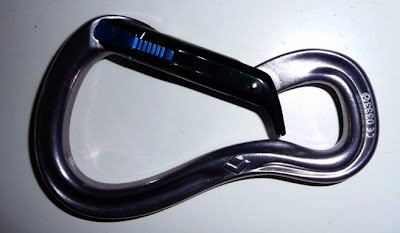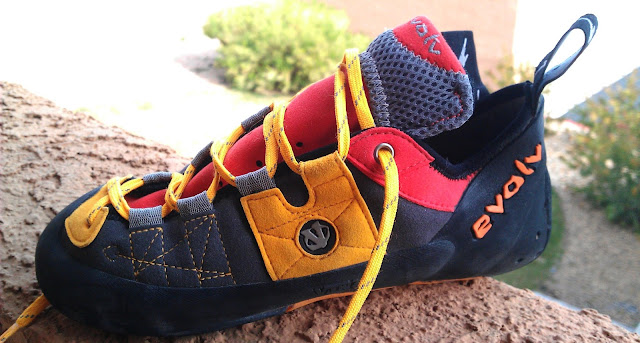Rest and Recovery for Rock Climbers: Live to Climb Another Day.
Let's talk about rest and recovery methods for rock climbers. Optimizing your downtime allows you to return more quickly to the sports you love. This article is the second of a three-part series that focuses on getting climbers to take care of their bodies. Part one is called Simple Nutrition for Rock Climbers: Eat Better, Pull Harder and talks about some small, easy ways to clean up your diet while climbing.
 Rock climbing takes a huge toll on your body. Hard climbing introduces thousands of microtears to the tissue of your muscles. Tendon injuries are common in the hands, wrists, elbows, shoulders, and elsewhere. The skin on your hands can end up looking like it's been cheese grated. Dislocations of the shoulder, and weirdly, knee, are quite common. Broken bones can occur during falls -- I saw a woman take a hard fall in the gym and instantly develop what can only be described as an "accidental second ankle". Experienced climbers rarely suffer dramatic injuries like that, but repetitive motion and overuse injuries are common.
Rock climbing takes a huge toll on your body. Hard climbing introduces thousands of microtears to the tissue of your muscles. Tendon injuries are common in the hands, wrists, elbows, shoulders, and elsewhere. The skin on your hands can end up looking like it's been cheese grated. Dislocations of the shoulder, and weirdly, knee, are quite common. Broken bones can occur during falls -- I saw a woman take a hard fall in the gym and instantly develop what can only be described as an "accidental second ankle". Experienced climbers rarely suffer dramatic injuries like that, but repetitive motion and overuse injuries are common.There are lots of ways you can help your body recover from the stresses of rock climbing. The best kind of recovery is also the hardest: time. Your body needs time to recover. The easiest, fastest way to let your body heal from its injuries -- be they big or small -- is to rest. First, you need to lay off your injured body. Let's talk about sleep.
1. Sleep
Getting enough sleep makes you a better climber... and better at pretty much everything else, too. This is not up for discussion. Everyone knows it's super important to get "enough" sleep. How much is enough? Conventional wisdom says to get 7 to 9 hours of sleep. You are not a conventional person, though. Conventional people sit in cubicles and listen to The Eagles. Our kind is a different breed. We climb sheer faces, scale massive mountains, and pull ourselves up ice spires. Conventional wisdom can suck it. We need more.All the research I've seen shows that seven to nine hours of sleep is not enough for an athlete who wants to be at the top of his/her game. A study done by Stanford University for the really-ambiguously-named journal "Sleep" shows that increasing the amount of sleep had a positive effect on athletic performance in college basketball players. Another study done on Stanford athletes (swimmers, basketball players, and football players) corroborates the previous finding. In our previous article, we (hopefully) convinced you that, as a rock climber, you are an athlete. All these studies about sleep apply directly to your life, your performance, and your ability to send. In his book called "The Athlete's Guide to Recovery: Rest, Relax, and Restore for Peak Performance
To summarize, rock climbers need to sleep more. To that end, you probably should drink less. Don't kill the messenger.
2. Recovery and Alternatives
Nothing can scratch that climbing itch while you're recovering, but there are plenty of fun ways to keep your body and mind in shape. The perennial rest-day favorite is slacklining. Have you ever tried it? I used to think it was stupid. "I'm not gonna do that ridiculous Cirque Du Soleil shit" - Me, more recently than I care to admit. A climber friend showed me how to do it, and slowly I was able to walk across the line. I couldn't even stand on the thing the first few times I tried. Give it a shot! It's not going to replace climbing, but it takes a great deal of balance and focus. More importantly, it gives you something to do at the rock climbing gym while your friends are climbing. Slacklining keeps your mind and body busy so you don't get tempted to climb hard and re-injure yourself.In addition to slacklining, everyone recommends yoga as a great "rest-day" exercise. I had never tried it, so I put on some athletic shorts, signed up for a yoga gym, "Vegas Hot", and gave it a shot. I tried three different programs: Hot Mat Pilates for 60 minutes, Hot Yoga for 60 minutes, and Hot Mat Pilates/Yoga Mix for 75 minutes. The Hot Mat Pilates 60 was brutal. The room is pitch black and kept at 105 degrees Fahrenheit and 40% humidity. You do aerobics mixed with static poses for the entire hour, sweating more than you have ever thought was possible. It was fun, but there's nothing "rest-day" about it. You do plyometrics, isometrics, and everything in between. Let me be clear: hot mat Pilates is not a rest-day exercise. It IS a full day's workout in itself.
Hot Yoga 60, on the other hand, is perfect for rest days. The heated room was great for my sore muscles (from the previous day's Hot Mat Pilates). The poses are all fairly static and do not require a great deal of strength. I found the hip mobility and stretching exercises to be very helpful because my hips are some of my least-mobile joints. Increasing hip mobility can increase the ease of really athletic climbing moves like high-steps and heel hooks.
Hot Mat Pilates/Yoga Mix 75 was one of the most athletically challenging things I've ever done in my life. It was also in the 105 degree room at 40% humidity. The Pilates part was intense cardio; burpees, mountain climbers, explosive squats, you name it! I started getting lightheaded about 50 minutes into it and almost fainted. My hands and feet started tingling and I thought I was going to have a heart attack. I sat on my mat and sweat for the remaining 25 minutes. I am in fairly good cardiovascular shape and work out about 4-5 times per week, and I couldn't do it. Once again, not a rest-day exercise. Don't try this at home. Stick with a yoga beginner's class if you can find one.
I found this video on Reddit of some yoga made specifically for climbers. It's not as intense as a yoga class, but it'll give you a good idea of what to expect:
There are a few other ways I take care of my muscles on rest days. I have a foam roller that I use for massaging my muscles. It's a simple tool, but it really helps me recover faster from intense workouts. Intense workouts cause damage to the tissue of your muscles. When you massage your muscles, you stimulate blood to flow into those muscles, helping them recover faster than they would otherwise. Also, it feels great, and is significantly cheaper than getting a professional massage every week. Mine is a slightly more "deluxe" model that has different areas that simulate palm, finger, and fingertip massages. My foam roller is a Trigger Point "The Grid" Foam Roller
Heat lamps, hot tubs, saunas, and steam rooms also help your muscles recover. "The therapeutic effects of heat include increasing the extensibility of collagen tissues; decreasing joint stiffness; reducing pain; relieving muscle spasms; reducing inflammation, edema, and aids in the post acute phase of healing; and increasing blood flow. The increased blood flow to the affected area provides proteins, nutrients, and oxygen for better healing."
3. Injuries
I am not a doctor, so I am not going to give out any medical advice. However, I have been injured plenty of times and have some anecdotal experience I'd like to share. I've had tendonitis, sprains, tennis elbow, and all kinds of other common climbing injuries.When you have, say, tennis elbow, it's easy to stay off it for a week or two when it still hurts. The problems occur during that third week, fourth week, fifth week, and onward. After the second week or so, the pain starts to go away. Your body thinks it's ready to go again. You get bored. Your friends call you and want to go on a climbing road trip. At this point, it's really easy to put more strain on your body and make the injury significantly worse. You need self-control. Let your injuries heal for significantly longer than you think is necessary. It sucks, but it's one of the only ways to avoid re-injury. Tendon injuries can take months to totally heal. Lay off it.
Serious injuries require the attention of a doctor. Neglecting them can make it worse. If you can, try to see a doctor who specializes in Sports Medicine. These doctors have seen many cases of the types of injuries you are likely to have and know exactly how to get you back in action again. Don't expect fast results, though. Healing takes a great deal of time.
There is such a huge amount of literature available on the internet about healing, recovery, and injury prevention for rock climbers. Here's some additional reading:
The Stone Mind - Injured Reserve
The Stone Mind - You Need To Rest
Dream in Vertical - PDF of Shoulder Workouts for Climbers
Reddit - An excellent discussion on "Climber's Elbow" prevention and healing
LiveStrong - Delayed Onset Muscle Soreness
LiveStrong - How To Make Muscles Recover Faster
Rest up!
by Ariel Castro
Rugged Innovations










